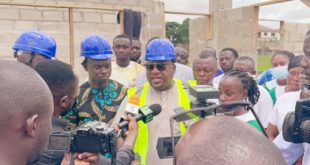Coronavirus symptoms: Pain in these two places could be sign of an Omicron infection.
01/5 Muscle pain is a common signs of omicron variants
Muscle pain is a common signs of omicron variants.
The Omicron variant has spread across the globe and is possibly the cause of most of the new cases of coronavirus infection at present.
Even though it is mild, due to the high transmissibility, it is spreading at a faster pace. Due to its overlapping signs with a common cold, sometimes it becomes difficult to identify the infection, leading to delays in treatment.
As per data, Omicron infection does not even lead to respiratory issues in most cases. It leads to subtle signs and can be identified if you experience pain at these two body parts.
02/5 The common symptoms of Omicron variant
The common symptoms of Omicron variant
Muscle aches have been a common symptom of coronavirus.

Even in case of the Omicron variant, people experience muscle pain and tightness. As per doctors in South Africa, where the Omicron cases were first reported, at the beginning, most people came to them with complaints of muscle ache known as myalgia.
Based on the data collected during the rise of Omicron cases across the globe, most people experience mild respiratory symptoms along with severe muscle pain. Runny nose, body aches, chest pain, backache and fatigue are commonly associated with the Omicron variant.
Read more: Coronavirus: Will you need a COVID-19 vaccine every year?
03/5 Two places where you can feel the pain
Two places where you can feel the pain
The two most common areas where people feel pain in case of Omicron variant are – the legs and shoulders.

In the past two years, we have come to realise that the coronavirus can affect any part of the body, but in case of Omicron, legs and shoulders are commonly affected areas.
As per the U.K. Zoe COVID Study App, people who complain about muscle aches during Omicron mostly feel it in the legs and shoulders.
See more: Coronavirus: Are COVID symptoms milder with a re-infection?
04/5 How does the pain feel like
How does the pain feel like
The Omicron virus led pain can manifest in a variety of ways, but most of the time it is characterized by widespread aching that can come and go till the time you do not recover from the infection. Some people infected with the Omicron variant also complain about odd feelings like numbness or pins and needles and weakness in the legs.
In case of shoulders, the patients mostly felt pain, stiffness, numbness. Weakness in the legs and shoulders can also be a telltale sign of the Omicron variant.
Read more: Diet plan to manage high cholesterol: Experts share tips to plan meals the right way (with sample diet plan for beginners)
05/5 Why is muscle pain common in case of Omicron?
Why is muscle pain common in case of Omicron?
Experts believe that muscle ache is a common symptom in case of viral infection and coronavirus is no exception. But the rise in cases of body pain can be due to multiple factors. It can be due to inflammatory mediators or maybe the mutant variant is affecting the musculoskeletal system more than the previous variant.
When the virus affects the musculoskeletal system, it commonly affects muscles, bones, joints, and ligaments, leading to aches and pains. Even though body ache is so common in case of the Omicron variant, it is not considered as the top five symptoms of viral infection. Runny nose, headache, fatigue, sneezing, and sore throat are initial symptoms of Omicron you must look out for.
Coronavirus symptoms: 6 signs of ‘Stealth Omicron’ you can witness in your gut and why the variant may not even give a positive result
Coronavirus infection: A long COVID symptom on your skin that may bother you for months
Know how to spot COVID signs in kids
Two most common symptoms of the new Stealth Omicron
Risk of Omicron reinfection is 5 times more
How to minimize the risk of long COVID
Pain in these places sign of Omicron infection
Next Story
Coronavirus: Will you need a COVID-19 vaccine every year?
TIMESOFINDIA.COM | Last updated on – Feb 13, 2022, 16:00 IST
01/6Are we looking forward to an annual COVID vaccine shot?
Are we looking forward to an annual COVID vaccine shot?
The successful development and launch of coronavirus vaccines around the world helped us breathe a sigh of relief. Although over a period of time, we have come to realise the prevalence of breakthrough infections, the available jabs have proved effective against the SARs-COV-2 virus and have minimized the risk of hospitalization and deaths to a great extent.
However, none of the COVID-19 vaccines are 100 percent effective. Given the emergence of new variants, which are not only transmissible, but have the ability to escape vaccine-induced immunity, one may need another dose to ramp up the immune response to protect oneself from getting infected after a set period. But while there are no conclusive answers to whether or not we’ll need an annual COVID shot like the flu, here’s all you need to know now.
How important is your heart rate in understanding your health risks? We ask leading cardiologists
02/6 Emerging variants may pose challenge to existing COVID vaccines, render it ineffective
Emerging variants may pose challenge to existing COVID vaccines, render it ineffective.
With new emerging variants comes new challenges. While the Delta variant was one of the deadliest of its kind, causing severe damage to the lungs, leading to severe, distressing symptoms and in the worst case scenario claiming many lives, the Omicron, which is comparatively more milder, is said to be highly transmissible, while possessing the ability to evade natural and vaccine-induced immunity. This is because the latest variant of concern is said to have over 50 mutations, which gives it the ability to spread faster and dodge the immune responses.
Also read: Coronavirus: Experts say these 4 signs of COVID are found on the skin
That said, the greatest challenge currently is the effectiveness of the current vaccine against the mutations of the virus. It is likely that the vaccine’s effectiveness and efficacy may not be the same as earlier. A high efficacy rate of a COVID-19 vaccine does not mean that it will have a high level of effectiveness in the real world. Most of the time, the effectiveness of the vaccine differs due to variables taking place in the real world.
Furthermore, the coronavirus strain is continuously mutating and the same vaccine may not be effective on all the mutant variants. Therefore, experts have recommended either updating the existing COVID vaccines or developing variant-specific vaccines in the future.
03/6 Experts suggest “tweaking” the vaccines
Experts suggest “tweaking” the vaccines
The onset of the Omicron variant raised concerns around the world. Experts found that the variant contained several mutations which enabled it to escape immunity from both a natural infection and the vaccines.
In light of such findings, doctors and medical professionals suggested updating the available COVID-19 vaccines to match the new variants.
Previously, the WHO technical body had said that the current COVID-19 vaccines may need to be reworked to ensure they are effective against Omicron and future variants of the coronavirus.
“The composition of current COVID vaccines may need to be updated to ensure that vaccines continue to provide WHO-recommended levels of protection against infection and disease by VOCs, including Omicron and future variants,” they said.
They further added, “COVID-19 vaccines need to… elicit immune responses that are broad, strong and long-lasting in order to reduce the need for successive booster doses.”
The global health agency believes that repeated booster doses of the original vaccine composition is unlikely to be appropriate or sustainable.”
04/6 Waning immunity from previous vaccines could add fuel to fire
Waning immunity from previous vaccines could add fuel to fire
Another reason why COVID-19 vaccines could become a regular affair is the possibility of waning immunity.
Following the initial two vaccine doses, protection provided by the vaccines may wane over time. Given the sudden rise in the number of COVID-19 cases and the prevalence of breakthrough infections, experts have come to believe that vaccine-induced immunity diminishes over time.
According to the World Health Organization (WHO), “Emerging data consistently show a decline in vaccine effectiveness against SARS-CoV2 infection and COVID-19 with time since vaccination, and more significant decline in older adults.”
05/6 Role of booster shots
Role of booster shots
COVID vaccine boosters are an extension of COVID-19 vaccines, which help re-expose the body’s immune system to the immunizing antigen, the memory of which (after the previous two doses) may have waned over time.
Although the WHO is of the opinion that booster shots are not a sustainable vaccine strategy, many countries including India have begun administering the third COVID shot. While immunity from COVID vaccines may dwindle over time, experts believe that we may need to boost our immune system frequently, which could be in the intervals of months or even annually. However, there is no conclusive evidence to suggest the same.
06/6 Variant-specific vaccines may be the next step, but how effective will it be?
Variant-specific vaccines may be the next step, but how effective will it be?
Many pharma giants are looking forward to developing Omicron-specific vaccines, which will specifically target the concerned variant.
In the US, Pfizer BioNtech and Moderna have both announced that they have initiated clinical trials of Omicron-specific vaccines. Similarly, Pune-based Gennova Biopharmaceuticals is all set to develop India’s first homegrown mRNA, Omicron-specific COVID vaccine.
But while Omicron-specific vaccines are the need of the hour, many scientists and experts have come to the fore presenting a completely different idea, suggesting that new specimens and strains of the virus emerge time and again and that it is extremely difficult to keep up with it. By the time the vaccine actually launches, either the infection rate may have died down or a new variant could be in play.
 HEROESNEWSGH The Biggest Gh News Platform
HEROESNEWSGH The Biggest Gh News Platform





